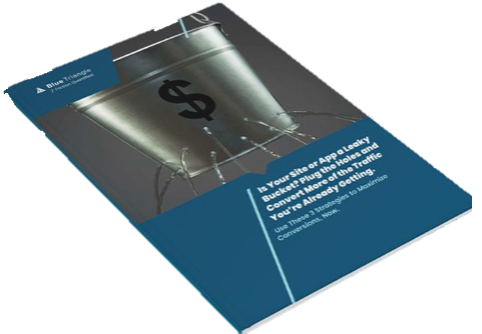User experience, or UX, has become even more essential recently, with Google placing more premium on page experience with the introduction of Core Web Vitals (CWV). CWV is an innovative way to score and rank websites based on-page speed, stability, and responsiveness and how each component impacts the user experience.
Delivering an outstanding customer experience (CX) is now more than just an emerging trend for websites. CX is a requirement. A poor experience stemming from slow loading time, cumbersome navigation, and inefficient page design can result in significant revenue loss and customer attrition.
As Google remains the dominant search engine, enterprises must track their CWVs to gain a solid understanding of the customer experience and drive their UX strategy to achieve desired business outcomes.
What are Google Core Web Vitals?
Google Core Web Vitals consist of three metrics that relate to user experience:
- LCP (Largest Contentful Paint)
- FID (First Input Delay)
- CLS (Cumulative Layout Shift)
Depending on your page performance, Google will categorize them as good, poor, or needs improvement. It is crucial to score well in all three metrics, indicating a better digital experience, for more favorable ranking and visibility in Google search results. Below, we break down each metric and define a good score.
Largest Contentful Paint, or LCP, refers to the time it takes for the largest content piece to fully load and be visible to the user. This can be a few lines of text, an image, or a video.
Traditionally, the largest content element on a page is the centerpiece. Thus, optimizing it to load quicker translates to a better digital experience for the user. Ideally, the largest content elements must load within 2.5 seconds for Google to give the page a good LCP score.
First Input Delay, or FID, is a metric measuring the time it takes for a browser to recognize a user's first interaction on the page. FID tracks the number of key presses, trackpad taps, and mouse clicks performed by the user before the browser acknowledges and acts on the action.
Web pages should have a FID time of under 100 milliseconds to provide a great user experience. FID requires field data from users' devices. Reaching the 75th percentile of mobile and desktop loads is a positive indication of a good FID score.
Cumulative Layout Shift, or CLS, measures a web page's visual stability. CLS looks at visual elements on the page and the degree to which they shift around.
Unstable elements push other elements up and down, leading to mistaken clicks and directing users to other pages, which unintentionally causes frustration. The CLS metric utilizes multiple frames of the page to measure the shifting of elements. A CLS score of 0.1 or lower is good, while any score over 0.25 is poor.
CWV's Impact on UX Strategy
Google's implementation of CWV is a clear signal for enterprises to include page experience at the core of their UX strategy. Upleveling the page experience is imperative in the digital age where speed is essential and users have grown increasingly discerning and demanding. This expectation makes it critical for enterprises to refine their UX strategy and stop losing impatient customers to competing websites.
For one, website speed makes a lasting first impression. That’s why speed should be a cornerstone of a modern UX strategy. Today's customers, readers, and website visitors are ready to pass down instant judgment on you and your brand.
If your website loads fast, you nailed that first-impression moment and nab a quick win for the digital experience. A fast website will help you secure new users as most people relate speed to efficiency, professionalism, and trust.
Businesses with slow websites risk losing a lot. According to a study, 79% of customers said they would not visit a slow-loading website. A big portion of them will likely go to a direct competitor.
Second, consumers expect speed. Recent internet statistics reveal that 47% of users want websites to load in two seconds or less. 40% say they will abandon a website if it takes three seconds or longer to load.
Google CWV provides you with a clear picture of your website in terms of speed and responsiveness. Thus, it gives you a better understanding of your web UX. With this understanding, you can prioritize optimization initiatives that enhance not only your page loading time, responsiveness, and stability but also deliver incredible CX at any stage of the customer journey.
As Google strives to make the entire web faster, it’s demonstrable that monitoring and improving your CWV not only affects user experience but also increases your site’s ranking with Google. Since page experience is now a crucial signal to their ranking algorithm, sites optimized for speed will appear higher in search results. This translates to more organic traffic, and thus more opportunities for conversions.
Keep Your CWVs and UX Healthy with Blue Triangle
With CWV poised to emerge as core performance metrics for Google, enterprises need to include them in their overall UX strategy. Poor CWV can lead to lower SEO rankings and site traffic, and jeopardize reaching your KPI and business goals.
Blue Triangle has built Performance Budget dashboards as an efficient way to track CWV to help businesses better understand critical aspects of the user experience. In doing so, organizations can create and implement a more effective UX strategy and take the necessary actions to improve site performance.
Performance Budgets enable users to see how their key performance and content metrics are doing compared to their defined budgets, or thresholds. Websites need to have multiple Performance Budgets for each page type, such as home, product, and checkout.
Entirely customizable, Performance Budgets allow you to place limitations for each metric that affects page performance, especially Google Core Web Vitals. By specifying a target threshold and percentage deviation for each key site metric, you can actively monitor the overall health of each metric. As a unique advantage, you can also be promptly alerted to any anomalies with corrective action diagnosis to help keep slow web page performance from returning.
Learn how to get a complete picture of your site's UX and set budgets based on data-driven insights with Blue Triangle Performance Budgets.

During the holiday rush, every shopper matters
Optimize the customer journey before the eCommerce event of the year.

.jpg)


